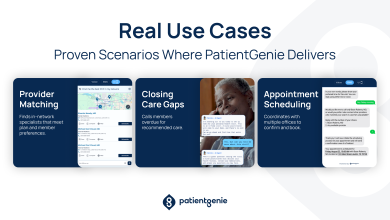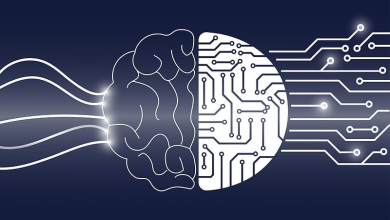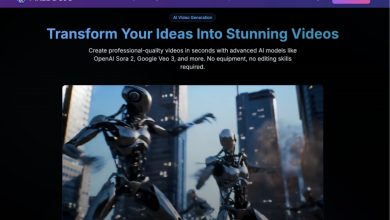
Historically, organizations faced challenges in transforming operations, integrating systems, unifying processes across geographies, and creating real-time intelligence from siloed information. These difficulties have typically led to inefficiencies, expensive operations and slow decision-making responsiveness. For Global Business Services (GBS) enterprises, the traditional setup has been around three key operational areas, primarily based on customer engagement: front, middle and back office.
As front- and middle-offices have typically owned the customer-facing interactions, they’ve witnessed more strategic, human-intensive and cost-intensive workflows and have been less touched by technology-led disruptions, unlike back offices. However, if organizations want to effectively drive transformations across these office departments with AI, they have to rethink and embrace a more unified and AI-led platform approach.
By embedding AI in the most important workflows, including finance, HR, procurement and customer service, organizations can eliminate routine work, drive more predictive capabilities and uncover significant insights that result in better-informed strategies and actions. The transformation not only improves business productivity but also allows GBS teams to shift their focus from transactional work to business-value strategic enablers.
Only 5% of companies have reached the most advanced level of GBS transformation, which highlights the challenges associated with such transformations. Executives and team leaders recognize the need and the opportunity to accelerate change initiatives by leveraging the latest technologies. In fact, 98% of GBS organizations plan to deploy Generative AI within the next 12 months. So why aren’t they?
The path to transformation is not straightforward. Inability to develop in-house AI capabilities, high turnover and persistent talent gaps are some of the inherent challenges. Added to this, the pilot-to-production success rate for GenAI pilots is low—a staggering 70% of proof-of-concepts failed to move to production in 2024. Common challenges range from insufficient budget, lack of required technology, low quality of data and insufficient expert talent to scale AI.
Unifying the enterprise
A unified platform approach enables transformation by reshaping all pillars of the operational model across the value chain – people, processes, data and technology. It easily and efficiently brings the front, mid and back-office on a common platform. It offers several benefits including streamlined operations, enhanced collaboration and consistency across business units. With the unification of tools and processes into a single integrated environment, organizations can have end-to-end visibility, automate business processes and utilize data to make more informed decisions. The centralization also enables digital transformation processes by facilitating automation.
Additionally, an integrated platform is vital to sustaining long-term scalability and agility in today’s world. By removing silos and stabilizing workflows, it removes redundancies and accelerates response to market demands. With real-time access to data, leaders can drive strategic initiatives with confidence, respond quickly to change and maintain continued improvement. Overall, this approach drives operational efficiency.
Introducing an AI-led GBS approach
AI is revolutionizing the GBS delivery models, with GenAI and Agentic AI appearing among some of the most promising AI technologies. GenAI helps automate tasks, provide insights and facilitate hyper-personalized experiences. Agentic AI is taking this further. It is transforming how GBS models operate by introducing systems that can think, decide and act independently across complex processes. These intelligent agents can interpret data in real time, make decisions and execute tasks without constant human input. When natively embedded in a unified platform, the impact of agentic AI is amplified.
A unified environment provides connected data, standardized workflows and integrated tools that agentic AI models need to operate at full potential. In GBS organizations, this combination enables seamless automation across different functions. Intelligent agents can navigate processes end-to-end, manage exceptions, and continuously learn and adapt to changing conditions. Together, agentic AI and unified platforms are shifting GBS from a transactional service model to a strategic engine for enterprise growth and agility. For example, a platform powered with AI agents can not only automatically manage and track all incoming service requests across multiple channels, including email and web, but can also accomplish autonomous request classification and subsequent case creation
Smart allocations are another benefit of the unified AI platform approach. This allows the system to intelligently allocate the right tasks to the right teams and individuals at the right time. It completes this by automatically computing the tasks, processing priorities and allocating them to the most effective resources.
The platform’s workforce management capabilities enable creation of a cross-functional, multi-skilled team that can handle varying workloads. It does this by efficiently analyzing and allocating tasks based on team members’ skills, proficiencies and areas of expertise. It would not be possible without a unified platform that is powered by AI to process and more importantly act on such data efficiently and effectively.
Finally, enabling enterprise-wide as well as granular level of visibility across departments and processes with intuitive, multi-functional and persona-specific reports and dashboards is another key benefit of a unified platform approach. This allows for visibility across different geographic locations, departments, teams and individuals, and helps identify inefficiencies, uncover new opportunities and act faster on them.
Experiencing true transformations
GBS organizations across the world are witnessing the benefits of transformations enabled by AI and intelligent automations. For example, a UK bank witnessed an approximately 25% addressable hyper-productivity improvement over an 18-month time frame with AI-powered straight-through-processing and improved digital journeys. An Aerospace major reduced Quote (RFQ) processing time by 50% with reimagined end-to-end order management. A top Shipping & Logistics firm is realizing 800+ headcount savings with AI-led transformation of its GBS centers across geographies.
Overall, integrated platforms with the added benefit of agentic AI could play a pivotal role in GBS transformations. With them, organizations can unleash efficiencies and value with AI-powered streamlined and transformed processes. To top it all, the platforms can not only optimize ROI but also increase workforce productivity and experience. With streamlined processes and real-time decision-making empowered, organizations can move at pace to elevate customer experiences, address market needs and internal requirements. As businesses continue to evolve in a world that is more digitally oriented, embracing these AI-enhanced platforms will be key not just to operational competence but to innovation, agility and fueling long-term growth.
The future of GBS is intelligent, connected and value-centric and organizations that embrace an AI-led unified approach today will be the ones that will lead tomorrow.




